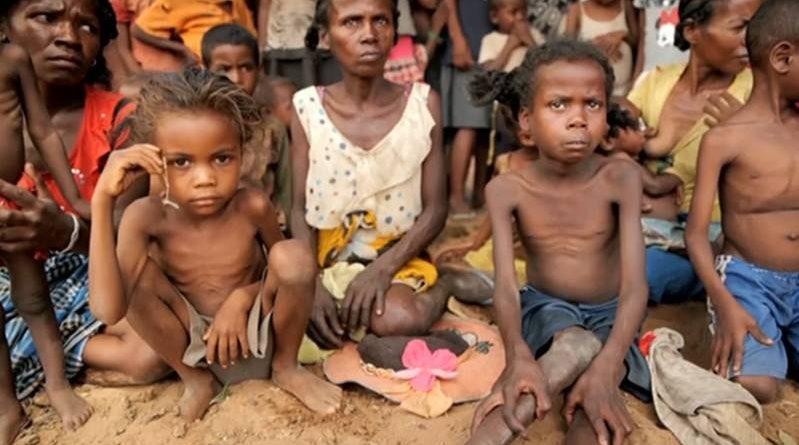33 children are born into hunger every minute in 2023 with 95% from Africa and Asia
According to new study released today on World Children’s Day by Save the Children, at least 17.6 million children will be born into hunger this year, or around 33 children per minute. This represents a 22% increase from a decade ago.
Approximately one-fifth more babies will experience hunger this year than in 2013, when 14.4 million babies were born into a world of hunger, according to Save the Children. Using UN estimates of the number of births and the most recent country-level data on the prevalence of undernourishment from the Food and Agriculture Organization (FAO).
A terrible hunger problem that is affecting every region of the world is a result of economic instability, conflicts, and recurrent climate shocks. Based on the analysis, 95% of undernourished births worldwide in 2023 will occur in Africa and Asia. The statistics does not account for the effect that the rising violence in the occupied Palestinian territories is having on regional hunger or fertility rates.
This year, more than 17 million babies will enter a world where hunger will eat away at their formative years. That equates to 33 kids every minute, or roughly the capacity of an American or British classroom. Hunger will obliterate their hopes, stifle their play, interfere with their education, and endanger their lives, according to Save the Children’s Global Head of Health and Nutrition Hannah Stephenson. Before these kids can even breathe for the first time, their future is already in jeopardy. We have to save their futures and childhoods before it’s too late.
This year, the Democratic Republic of the Congo (DRC) is expected to have the largest number of undernourished newborns born in nations where at least 25% of the population suffers from chronic hunger. It is anticipated that 1.5 million babies in the Democratic Republic of the Congo would be born hungry, the greatest number for the nation since FAO statistics date back to 2001.
According to projections, the Democratic Republic of the Congo would have 6.6 million undernourished children under the age of five in 2023. In a North Kivu, Democratic Republic of the Congo displacement camp, 33-year-old Sifa* struggles to provide for her five children, the youngest of whom was born barely three months ago. She fears she will lose another kid to famine, having already lost three to cholera, malaria, and armed groups.
“I’m always afraid that I’ll lose another kid. “Will I ever see my children grow up and have enough food for them?” is a question that haunts me. Sifa expressed her fear of discovering her child missing on a daily basis. “I’ve been having trouble feeding my baby since giving birth three months ago. Although I should be eating more, I give my nine-year-old daughter the little food we have. I try to give her something because she already begs for food every day and goes to bed hungry.
We’re aware that sending her out there is risky, but there’s nothing else we can do because she needs to eat. Afghanistan, one of the nations with the highest rates of severe undernutrition in Asia, is expected to give birth to the greatest number of hungry children.
Ten-month-old Marium* is one of the 440,000 or more infants in Afghanistan who are expected to be born hungry this year. Marium began experiencing diarrhea at the age of six months, and because of a compromised immune system, pneumonia was eventually identified as the cause. Her mother, Zolaikha*, 23, clarified that due to their low income, the family is unable to purchase wholesome food to support her children’s health.
“Since we started giving her water and homemade food, she started to get diarrhea,” the woman continued. Her condition worsened two months ago. She was quite frail. She had a high fever, constant agony, and discomfort. She also cried all the time. I cried with her once. It was painful to watch my daughter suffer. I hope that nobody’s child ever becomes ill. Zohra*, my other child, was extremely undernourished as well. She also experienced recurrent diarrhea and subsequently contracted pneumonia. It is all the result of consuming tainted water and eating insufficient nutrient-rich meals.
Significant strides have been achieved in the past to lessen world hunger. The data shows that in 2001, 21.5 million babies were born hungry, which is one-fifth more than in 2023. But in 2019, things started to go backwards dramatically, mostly because of conflicts, unstable economies, and the escalating climate disaster.
Prior to the uptick in hostilities in the occupied Palestinian territory, where 2.3 million people in Gaza have been struggling to eat enough food because of the continuous bombardment, the most recent national data on undernourishment was released.
Save the Children discovered that more than 66,000 kids are anticipated to be born in Gaza this year, with more than 15,000 born between October 7 and the end of 2023, using the UN’s birthrate data. Babies’ lives will be in jeopardy from the moment of their birth if there is no ceasefire.
“Hunger is still a viable issue. Like we have in the past, we have the ability to drastically lower the number of undernourished children today,” Hannah Stephenson said. But if we don’t address the underlying causes of poverty and malnutrition, the advancements made for kids will keep reversing. There must be a global response to this worldwide hunger catastrophe.
At today’s global food security summit in the UK, Save the Children is urging world leaders to address the underlying causes of severe food and nutrition shortages. We won’t be able to guarantee that the same alarms don’t go off in the upcoming years unless we end international conflict, address the climate crisis and global inequality, and create more robust health, nutrition, and social protection systems that are less susceptible to shocks like COVID-19, conflicts, and the climate crisis.
The organization that advocates for children’s rights is also urging increased sector-wide cooperation, communication, and investment along with local community leadership to support response planning and execution, as well as our capacity to act promptly and keep predictable shocks from developing into crises. Additionally, Save the Children is urging international leaders to increase the implementation of low-cost measures to prevent and treat malnutrition, such as investing in community and primary healthcare, promoting and defending breastfeeding, and providing community-based treatment for acute malnutrition.




